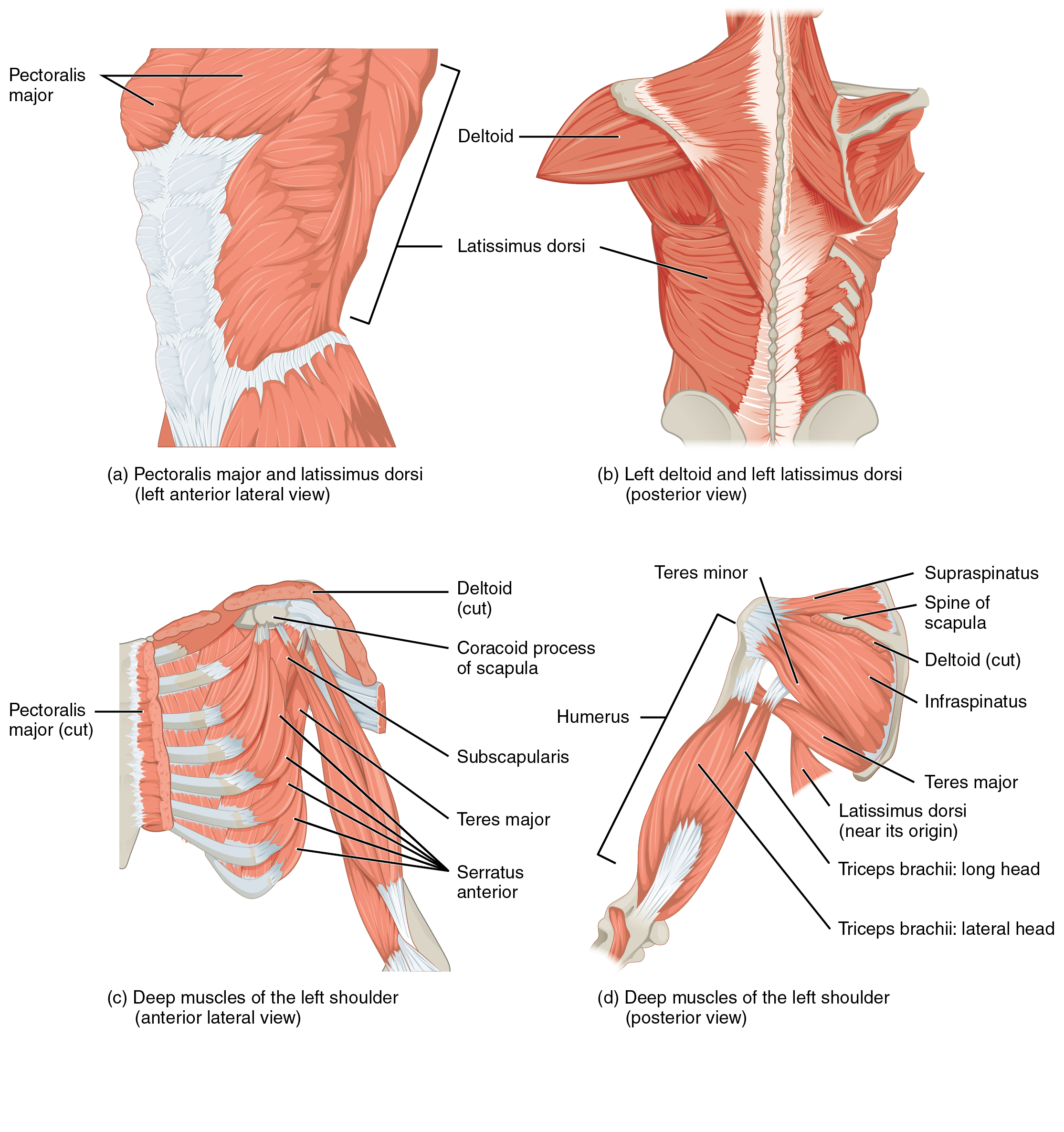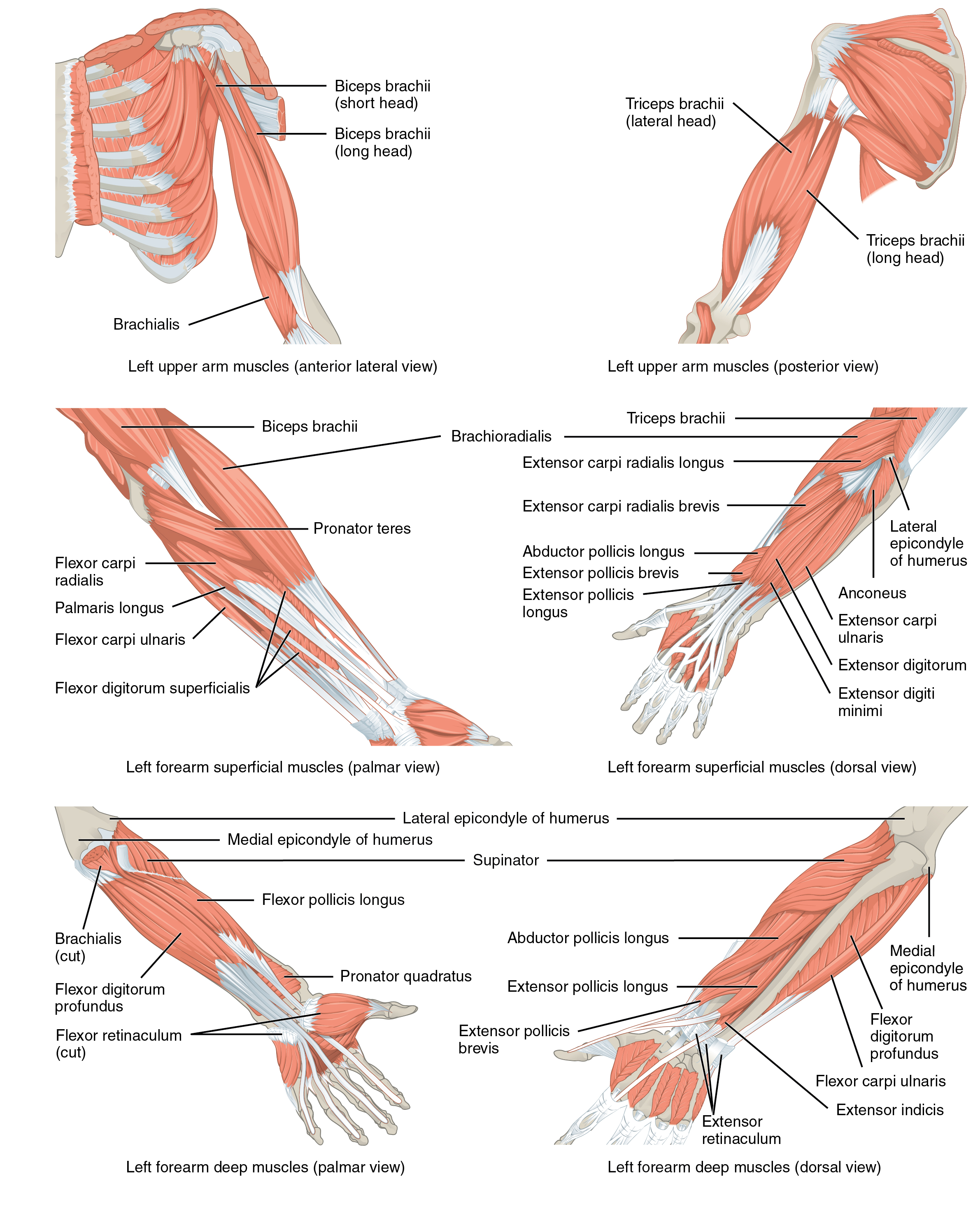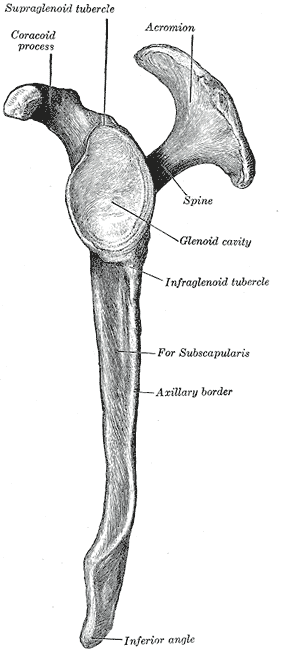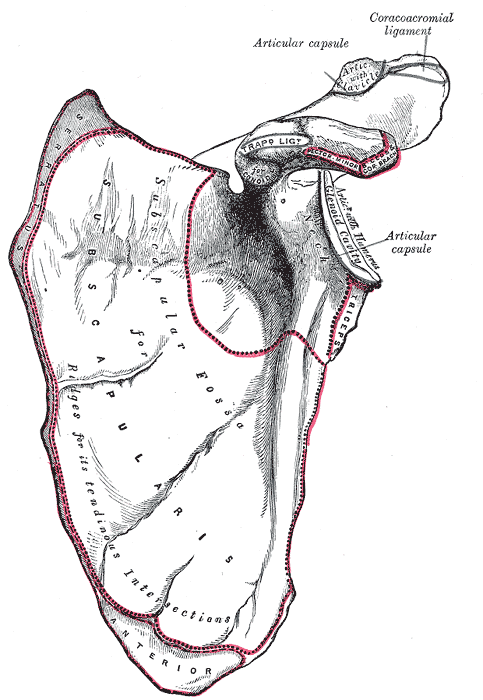Triceps Brachi
| Muscle | Origin | Insertion | Innervation | Action |
|---|---|---|---|---|
| Triceps brachii lateral head | Posterior humerus just *proximal* to radial groove Lateral intermuscular septum |
Olecranon of Ulna | Radial n. C6 - C8 |
Elbow: Extension |
| Triceps brachii Long head | Infraglenoid tubercle of Scapula | Olecranon of Ulna | Radial n. C6 - C8 |
Elbow: Extension GHJ: Extension, Adduction |
| Triceps brachii medial head | Posterior humerus just distal to radial groove Medial intermuscular septum |
Olecranon of Ulna | Radial n. C6 - C8 |
Elbow: Extension |
Long Head
Origin
The triceps long head as a proximal origin on the Infraglenoid tubercle of scapula6.
There is also attachments to the glenohumeral capsule.
Insertion
Olecranon process of Ulna6
Innervation
Action
When looking at the long head’s origin and insertion, it is lengthened by shoulder flexion, as a result it optimizes the length-tension curve7. The Long head can produce the most force when the shoulder is flexed7.
The triceps brachii long head and latissimus dorsi form a “force adductor couple”7. The adduction and extension moment created by the latissimus dorsi results in inferior displacement of the humeral head, the triceps long head contracts and its abductive component counteracts the latissimus dorsi creating a superior glide7. This results in no net vertical translation of the humeral head and keeping its optimal position in the glenoid.
Thus although the triceps long head has an “abductive” component, we consider it to function as an “adductive assist.”
Medial Head
Origin
Insertion
Olecranon process6
Innervation
Action
Elbow: Extension6
Lateral Head
Origin
Insertion
Olecranon process6
Innervation
Action
Elbow: Extension6
Notes
Triceps Reflex
Triceps reflex can be used to assess C7 nerve root8




